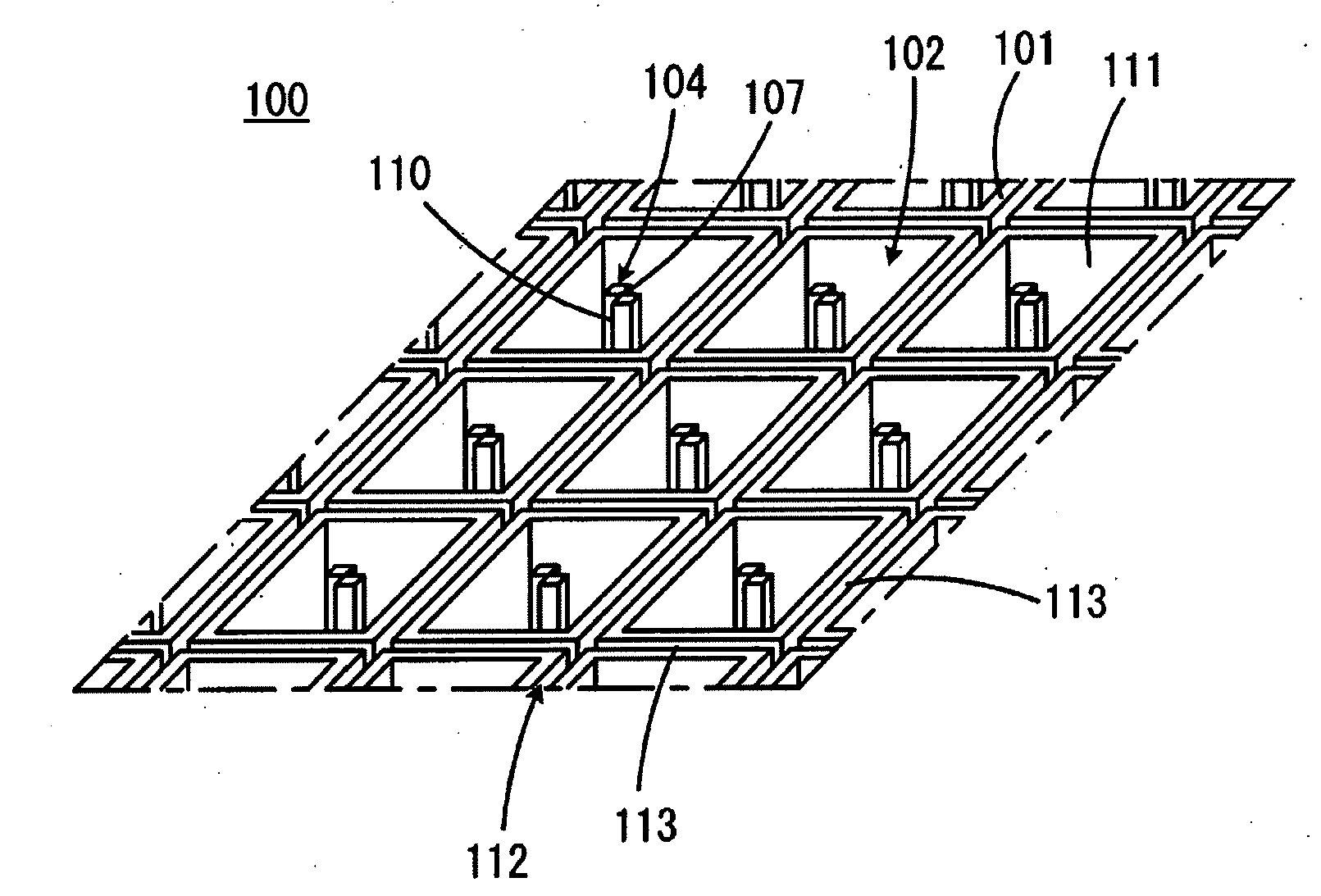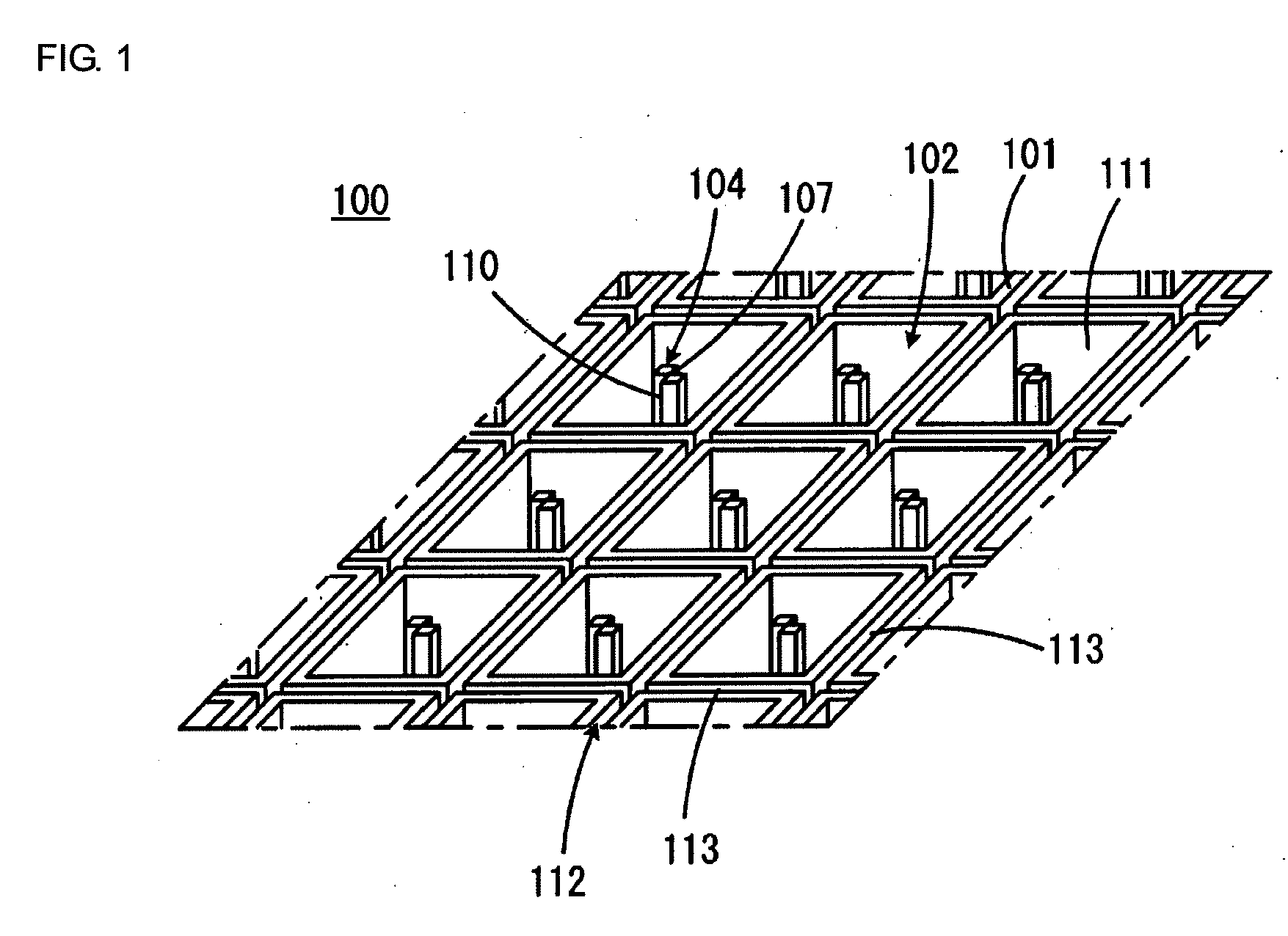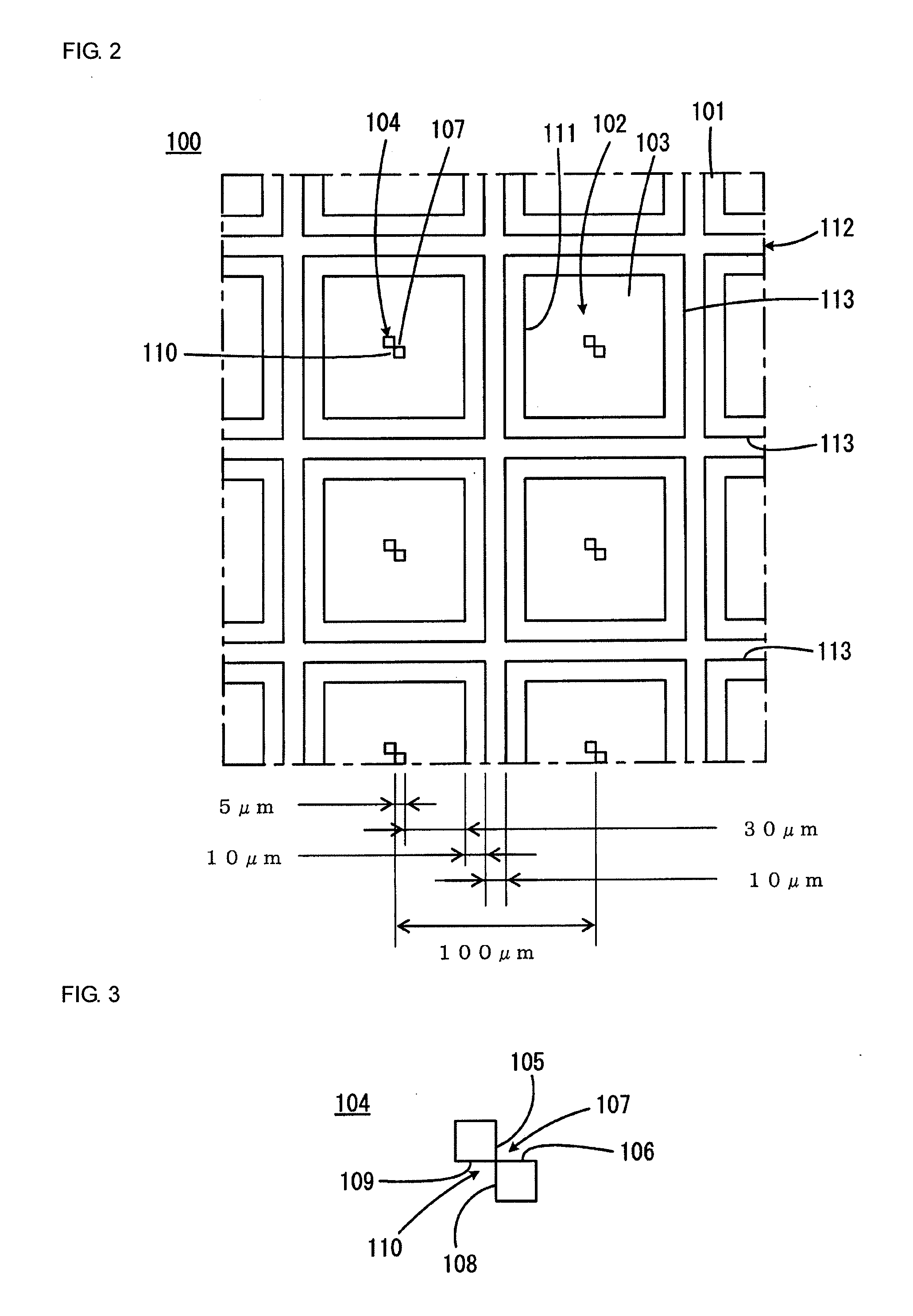Probe array substrate and method for producing the same, and probe array and method for producing the same
a technology of probe array and substrate, which is applied in the field of probe array substrate and method for producing the same, can solve the problems of difficult detection of target molecules, insufficient detection sensitivity of target molecules, and inability to produce probe arrays having a sufficiently high packing density, so as to reduce the manufacturing variation in the amount of probe molecules held in the probe-holding portions, increase the packing density of probes on the probe array, and reduce the amount of probe molecules produced
- Summary
- Abstract
- Description
- Claims
- Application Information
AI Technical Summary
Benefits of technology
Problems solved by technology
Method used
Image
Examples
Embodiment Construction
[0074]FIG. 1 is a perspective view showing part of a probe array substrate 100 according to a first embodiment of the present invention. FIG. 2 is a top view showing part of the probe array substrate 100 shown in FIG. 1.
[0075]Referring to FIGS. 1 and 2, the probe array substrate 100 has a main surface 101 and is plate-shaped as a whole. The probe array substrate 100 has a plurality of probe-holding portions 102 arranged in rows and columns along the main surface 101. The probe-holding portions 102 have an array pitch of, for example, 100 as shown in FIG. 2. The individual probe-holding portions 102 are defined by recesses in the main surface 101. In the embodiment shown, the individual probe-holding portions 102 are defined by recesses having bottom surfaces 103 at a level lower than the main surface 101. In another embodiment, the probe-holding portions can be defined by through-holes having no bottom surfaces.
[0076]Liquid-introducing protrusions 104 are formed in the probe-holding...
PUM
| Property | Measurement | Unit |
|---|---|---|
| hydrophilic | aaaaa | aaaaa |
| hydrophobic | aaaaa | aaaaa |
| outer diameter | aaaaa | aaaaa |
Abstract
Description
Claims
Application Information
 Login to View More
Login to View More - R&D
- Intellectual Property
- Life Sciences
- Materials
- Tech Scout
- Unparalleled Data Quality
- Higher Quality Content
- 60% Fewer Hallucinations
Browse by: Latest US Patents, China's latest patents, Technical Efficacy Thesaurus, Application Domain, Technology Topic, Popular Technical Reports.
© 2025 PatSnap. All rights reserved.Legal|Privacy policy|Modern Slavery Act Transparency Statement|Sitemap|About US| Contact US: help@patsnap.com



